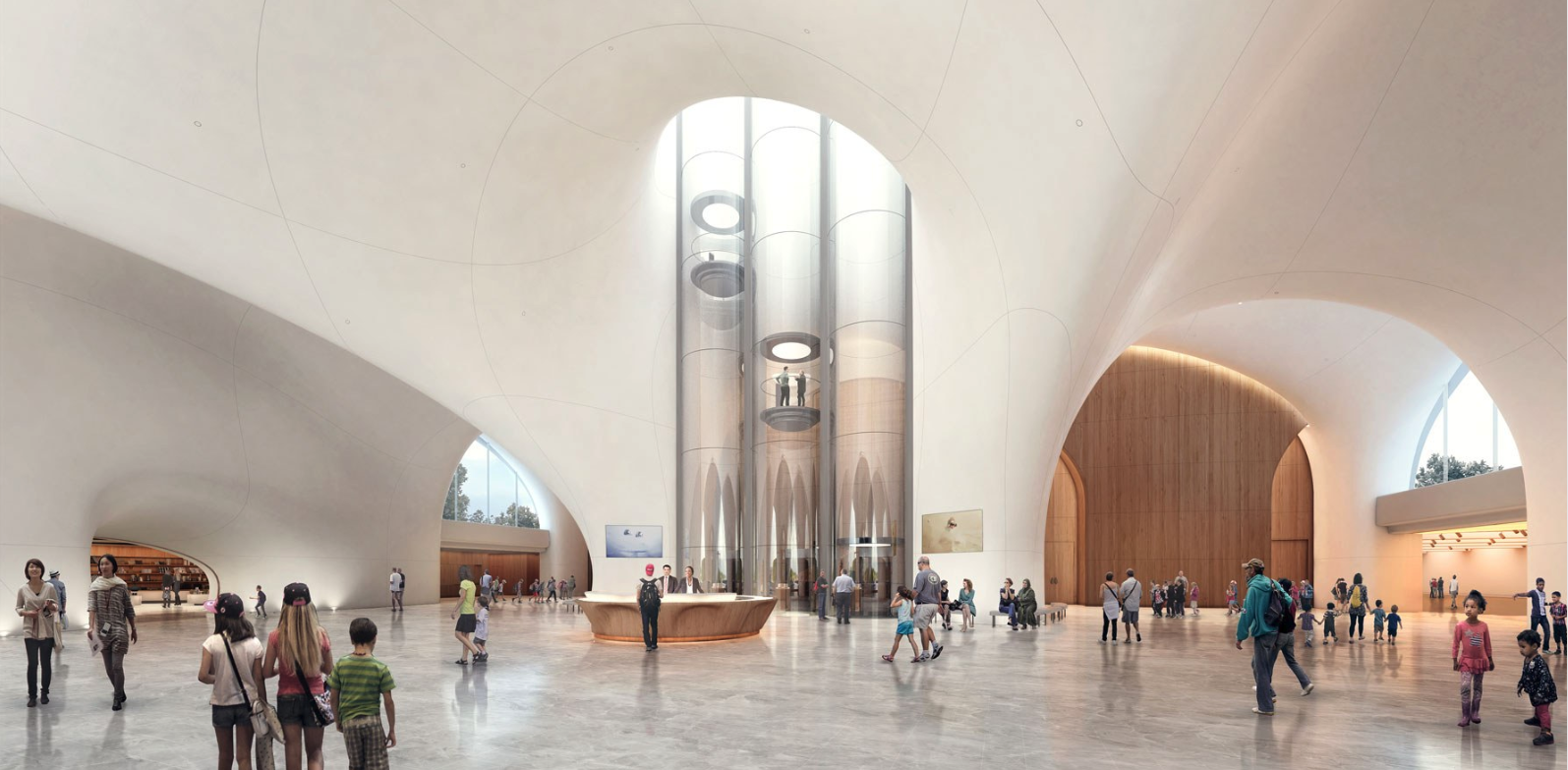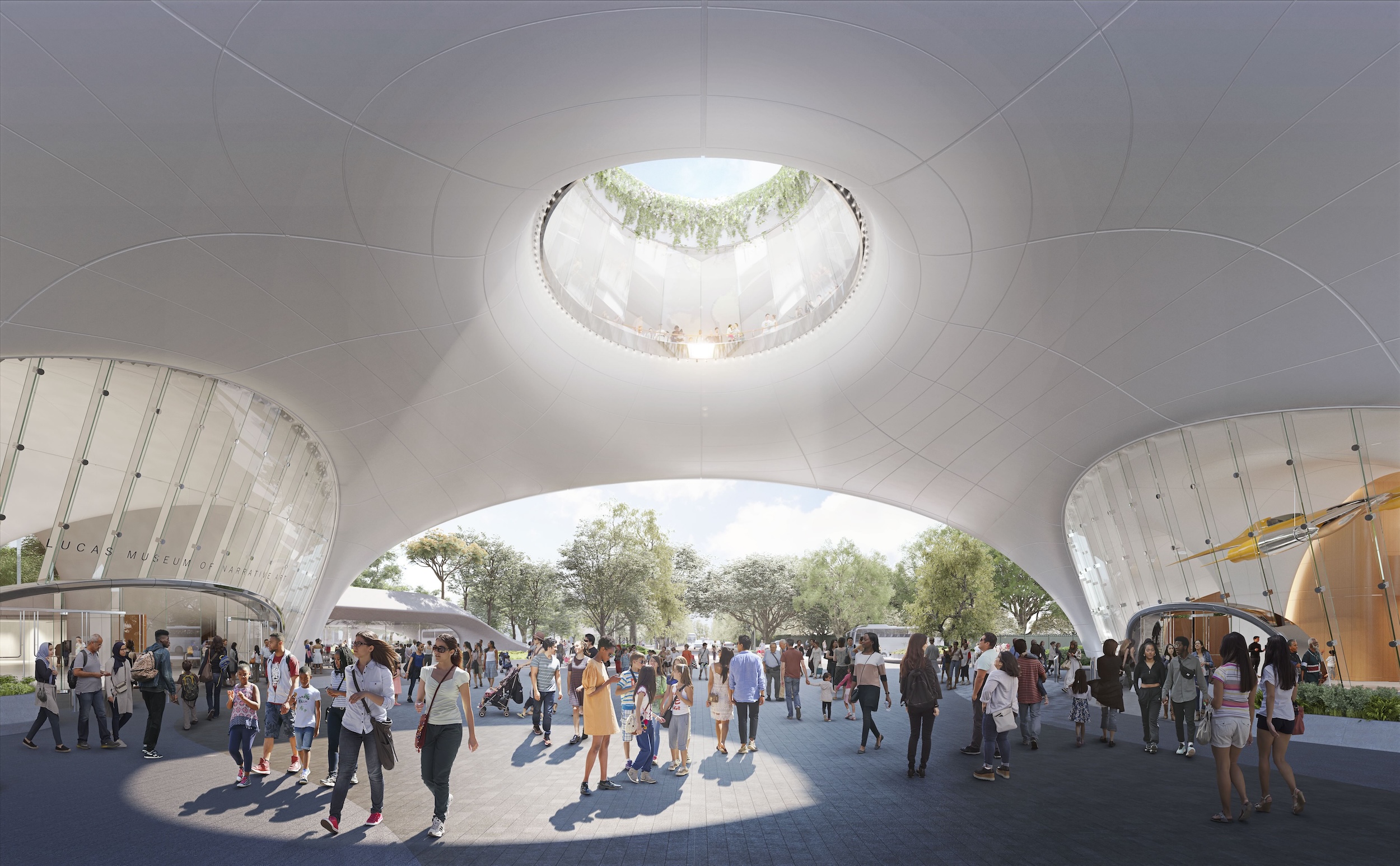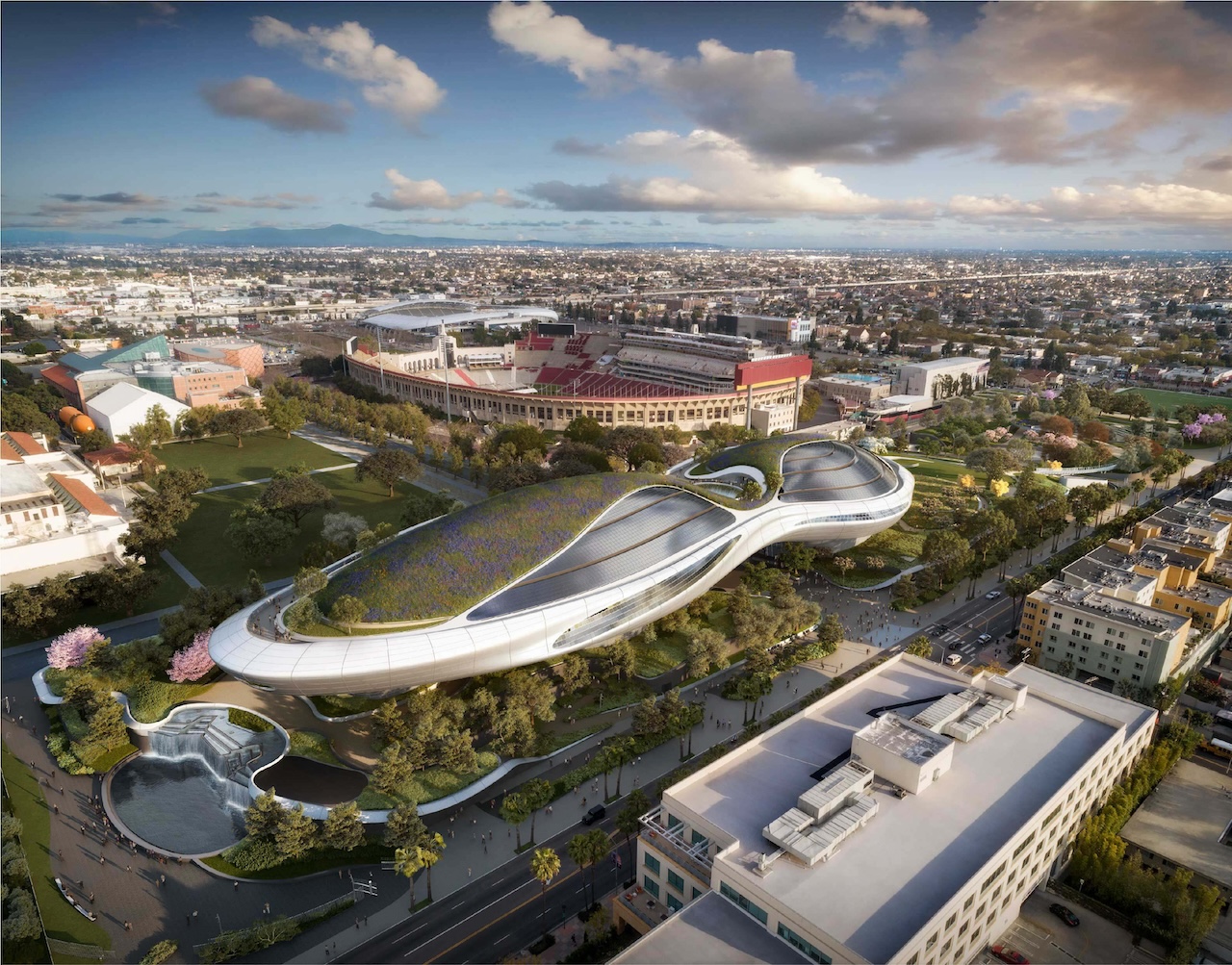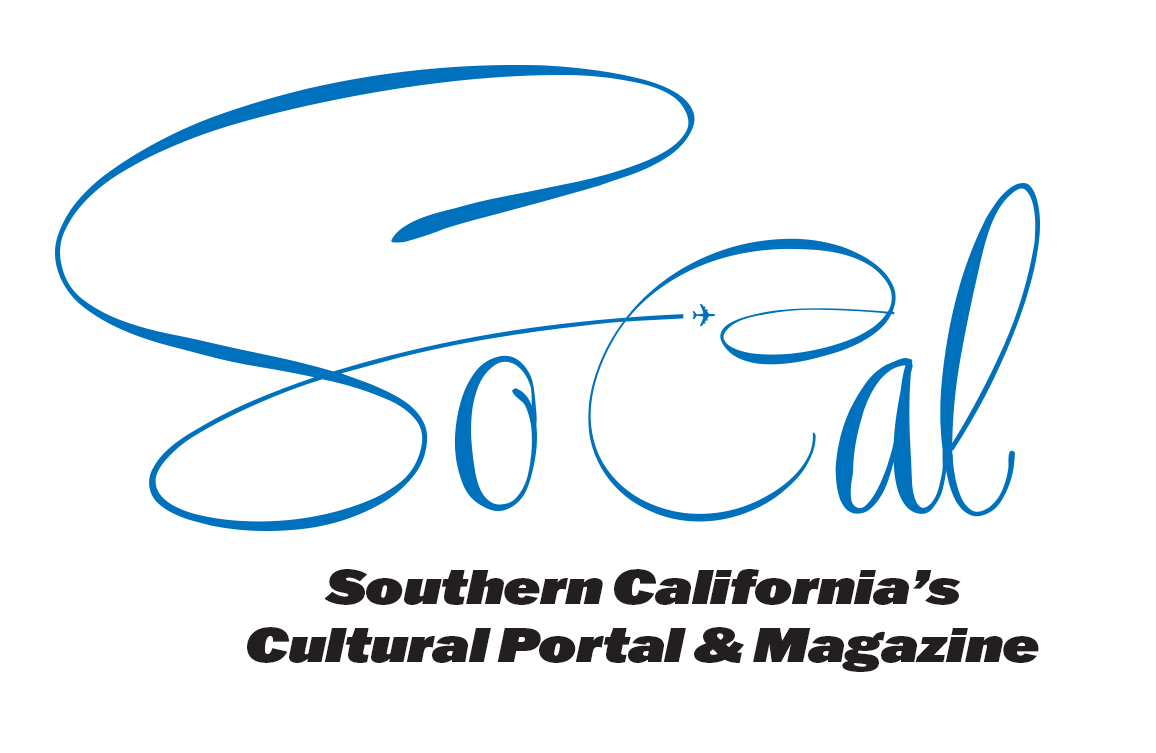


When the Lucas Museum of Narrative Art finally opens its doors in Exposition Park in 2026, visitors won’t just step into another shrine to film memorabilia. They’ll enter a sweeping, spaceship-like structure dedicated to one of the oldest and most universal human impulses: storytelling through art.
The $1 billion project, founded by filmmaker George Lucas and philanthropist Mellody Hobson, has been in the works for more than a decade. Rising beside the Coliseum and the California Science Center, the 300,000-square-foot museum will house an eclectic collection spanning Renaissance paintings, Depression-era murals, Norman Rockwell illustrations, comic book pages, and original Star Wars concept art. Together, these works form a single, provocative category: “narrative art.”
A Museum Built on Story
Designed by Ma Yansong of MAD Architects, the building itself is a kind of narrative—an organic form lifted above the ground, its sweeping canopy shading gardens and green space where asphalt parking once sprawled. Landscape architect Mia Lehrer has filled the site with more than 200 trees, walkways, and public lawns, making the museum as much a civic park as a cultural destination.
Inside, two theaters, classrooms, and expansive galleries will anchor a collection Lucas has been assembling for more than 50 years. The focus is not on abstract expression or conceptual installations but on images that tell stories—art as a window into myth, memory, and identity.
What You’ll See
Expect the unexpected. A John Singer Sargent portrait may hang across from a Jack Kirby comic strip. Ernie Barnes’ kinetic depictions of Black life will share space with 16th-century religious tableaux. Murals by Judith F. Baca will face early storyboards from The Empire Strikes Back.
“The power of narrative art,” says chief curator Pilar Tompkins Rivas, “is that it makes meaning accessible. These are images that speak directly, whether they were painted 500 years ago or drawn last year.”
The collection also emphasizes voices often underrepresented in mainstream art museums—Indigenous artists, Latinx muralists, contemporary Black painters, and illustrators whose work has shaped cultural identity for generations.
Bridging Pop and Fine Art
Critics may raise eyebrows at placing pulp magazine covers beside Frida Kahlo paintings. But that’s precisely the point: to dissolve boundaries between “high” and “low,” and to show how both comic books and oil paintings can shape our collective imagination.
For Lucas, the logic is simple. “All art tells a story,” he explained during a 2025 Comic-Con panel, where he previewed pieces from the museum’s holdings. “Whether it’s a myth painted on a chapel ceiling or a storyboard for a film, the artist is trying to connect us to a world beyond ourselves.”
A Cultural Anchor for South L.A.
The museum is also a major investment in South Los Angeles. By replacing a sea of parking lots with gardens and a landmark building, the Lucas Museum is poised to become a gathering space for residents as much as a tourist draw. Education programs, free public access to outdoor spaces, and exhibitions rooted in community stories will ground the project in its neighborhood.
For Exposition Park, already home to the California African American Museum and the Natural History Museum, the addition promises to solidify the district as one of L.A.’s richest cultural corridors.
The Story Ahead
As the finishing touches are placed on the museum’s flowing façade of fiberglass panels, anticipation builds. When it opens in 2026, the Lucas Museum of Narrative Art won’t just celebrate a galaxy far, far away—it will challenge Los Angeles to see storytelling itself as an art form worth collecting, critiquing, and cherishing.
Because in the end, as the museum’s vision suggests, our shared stories—whether painted, penciled, or projected—are the truest art of all.
